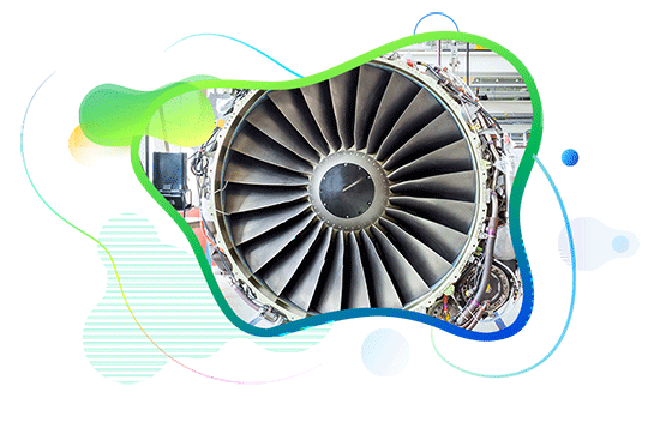
How MRO Can Drive Sustainability in Aviation
Published :

The Maintenance, Repair, and Overhaul (MRO) sector stands at a critical juncture. With the aviation industry’s goal to achieve net-zero emissions by 2050, MRO operations must rapidly evolve to reduce their environmental footprint without compromising operational efficiency or reliability. MRO software providers and fleet operators among other stakeholders need to work together to achieve this goal. Continue reading to find out how MRO operations could be optimized towards a sustainable future and what industry leaders and experts are saying.
The push towards sustainability in MRO is driven by regulatory pressures, customer expectations, and the intrinsic need to mitigate environmental impacts. According to Aviation Week, MRO software providers are beginning to receive more inquiries about their sustainability policies, though many have yet to make substantial shifts in their practices.
The global aviation industry is responsible for around 2.5% of carbon emissions, a figure projected to rise unless significant changes are implemented. As integral parts of the aviation ecosystem, MRO software operations must adapt to these changes. Oliver Wyman's research highlights that embracing sustainability can lead to cost savings, enhanced brand reputation, and compliance with international environmental regulations.
Implementing green technologies and eco-friendly practices is paramount. This includes using environmentally safe materials, recycling parts, and reducing waste. As noted by Aviation Week, the concept of "reduce, reuse, and recycle" is becoming synonymous with MRO. The MRO software must evolve to make this happen.
For instance, Lufthansa Technik has been pioneering in recycling aircraft parts, reducing waste, and minimizing the need for new raw materials. This not only helps in reducing environmental impact but also in lowering operational costs.
Enhancing energy efficiency in MRO facilities can significantly reduce the carbon footprint. This involves upgrading to energy-efficient lighting and HVAC systems, as well as optimizing the use of renewable energy sources. Energy-efficient operations can lead to a reduction of up to 20% in operational costs.
One notable example is Delta TechOps, which has incorporated solar panels and energy-efficient systems in its facilities, significantly reducing energy consumption and operational costs.
Leveraging digital tools and advanced analytics can streamline operations, reduce resource consumption, and improve predictive maintenance. Digital twins and IoT (Internet of Things) technologies play crucial roles in monitoring and optimizing asset performance.
According to a study by McKinsey, digital transformation in MRO can lead to a 10-15% increase in productivity and a 5-10% reduction in maintenance costs. By using predictive analytics, companies can pre-emptively address potential issues, reducing downtime and resource wastage.
MRO aviation software operators must extend their sustainability efforts to their supply chains. This involves working closely with suppliers to ensure they adhere to environmental standards. David Stewart from Oliver Wyman highlights the importance of addressing Scope 3 emissions, including indirect supply chain emissions (Aviation Week).
Sustainable supply chain initiatives can be seen in companies like Boeing, which has implemented stringent sustainability criteria for its suppliers, ensuring that every part of the supply chain contributes to the overall sustainability goals.
Collaboration across the industry is essential for fostering innovation and sharing best practices. MRO aviation software providers can benefit from partnerships with technology firms, OEMs, and regulatory bodies to develop and implement sustainable solutions.
A notable collaboration is between Airbus and various MRO software providers to develop sustainable aviation fuel (SAF) solutions. These efforts are geared towards reducing the carbon footprint of aviation fuels, making a significant impact on overall sustainability.
Monica Badra, Founder of Aero NextGen, emphasizes the importance of a proactive approach to sustainability: "At Aero NextGen, we believe that sustainability is not just a compliance requirement but a strategic advantage. By enabling MRO aviation software to integrate sustainable practices into their operations, we not only reduce our environmental impact but also enhance efficiency and competitiveness."
Manoj Singh, President of Global Aerospace at Ramco Systems, adds: "The future of MRO aviation software lies in the seamless integration of digital technologies with sustainable practices. Our goal is to create a resilient and eco-friendly MRO ecosystem that can adapt to the changing needs of the aviation industry."
The journey towards sustainable MRO software operations is ongoing and requires continuous effort and innovation. By adopting eco-friendly practices, improving energy efficiency, embracing digital transformation, managing sustainable supply chains, and fostering collaboration, the MRO industry can significantly reduce its environmental footprint while maintaining operational excellence.
Incorporating sustainability into MRO aviation software operations not only helps mitigate environmental impacts but also enhances the long-term viability and competitiveness of businesses in the aviation sector. As regulations become stricter and consumer awareness grows, companies that lead in sustainability will have a distinct advantage.
By staying informed and committed to sustainability, MRO software providers can play a pivotal role in shaping a greener future for the aviation industry.

All Rights Reserved. © Copyright 2024. Ramco Systems.